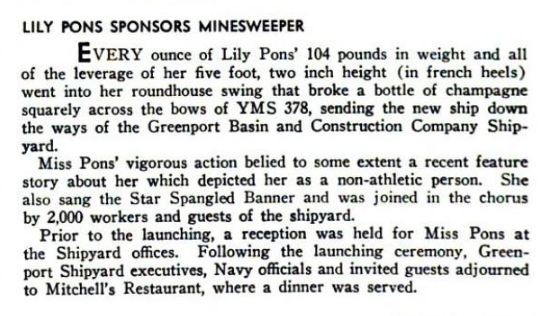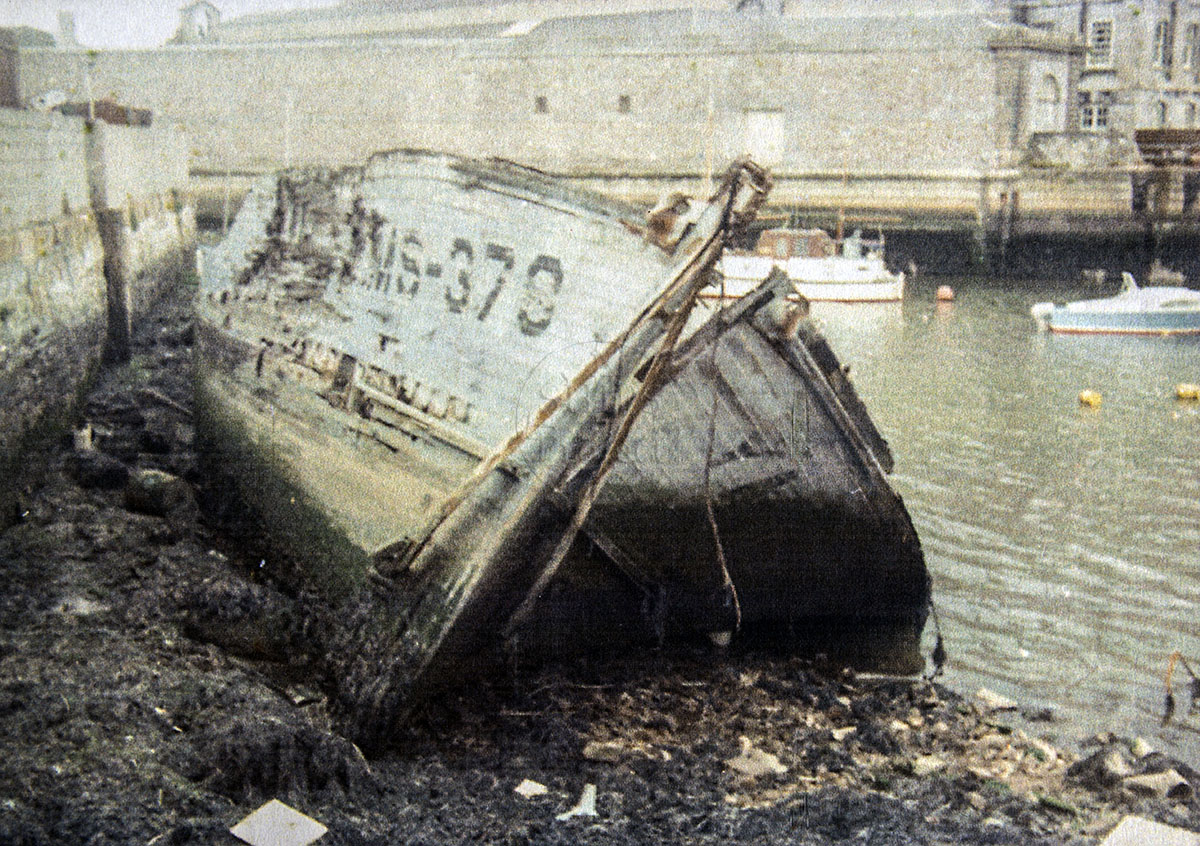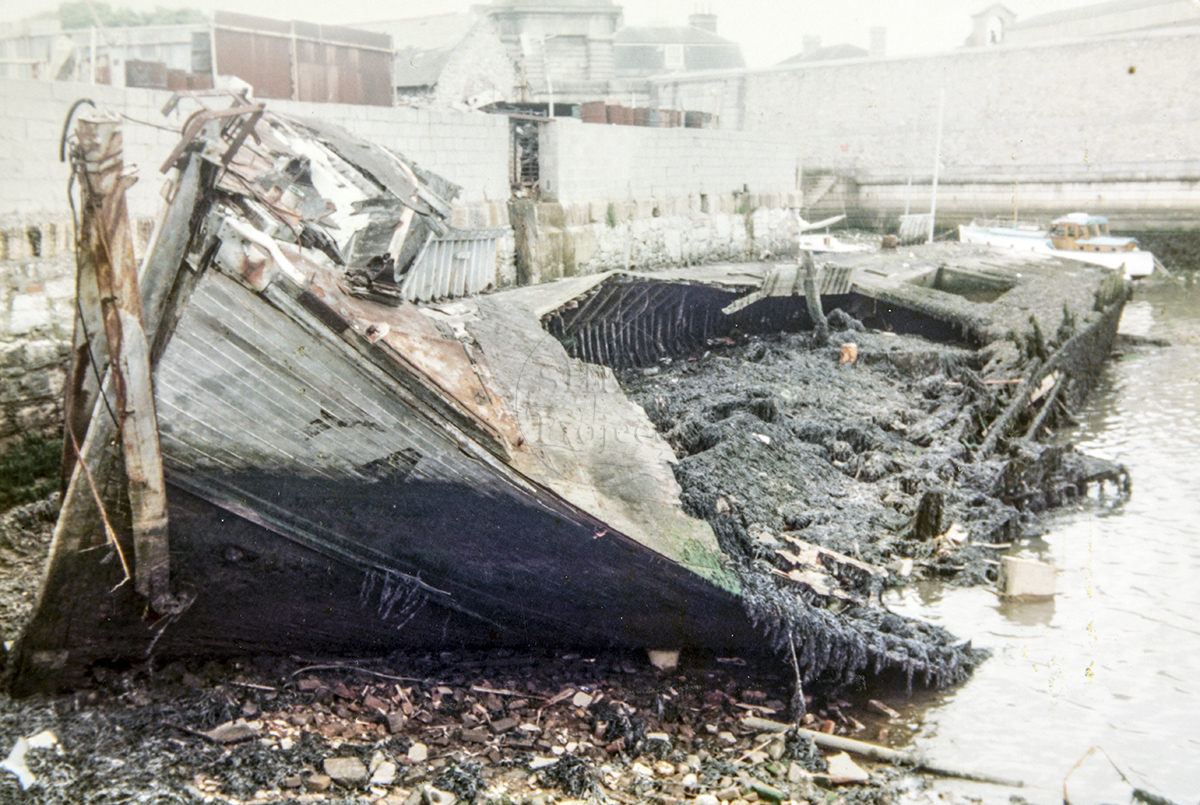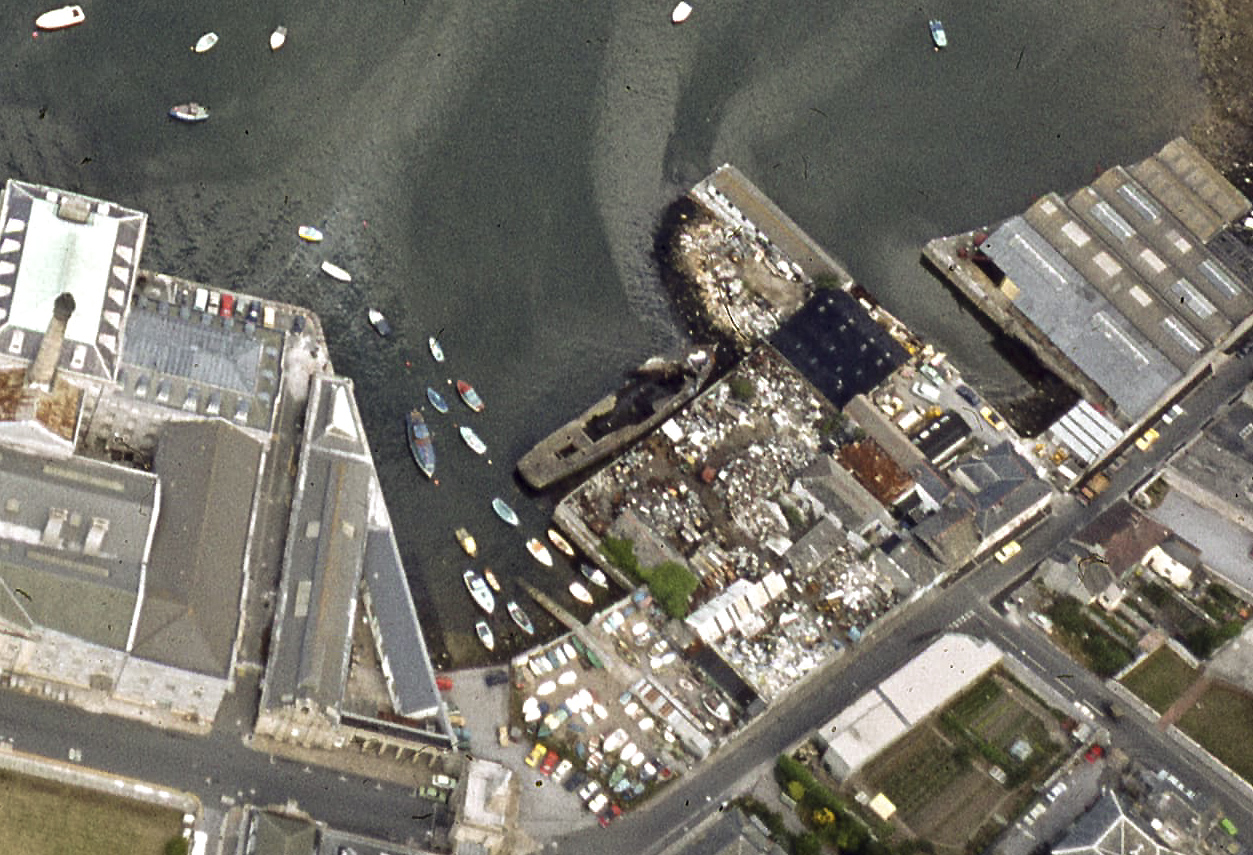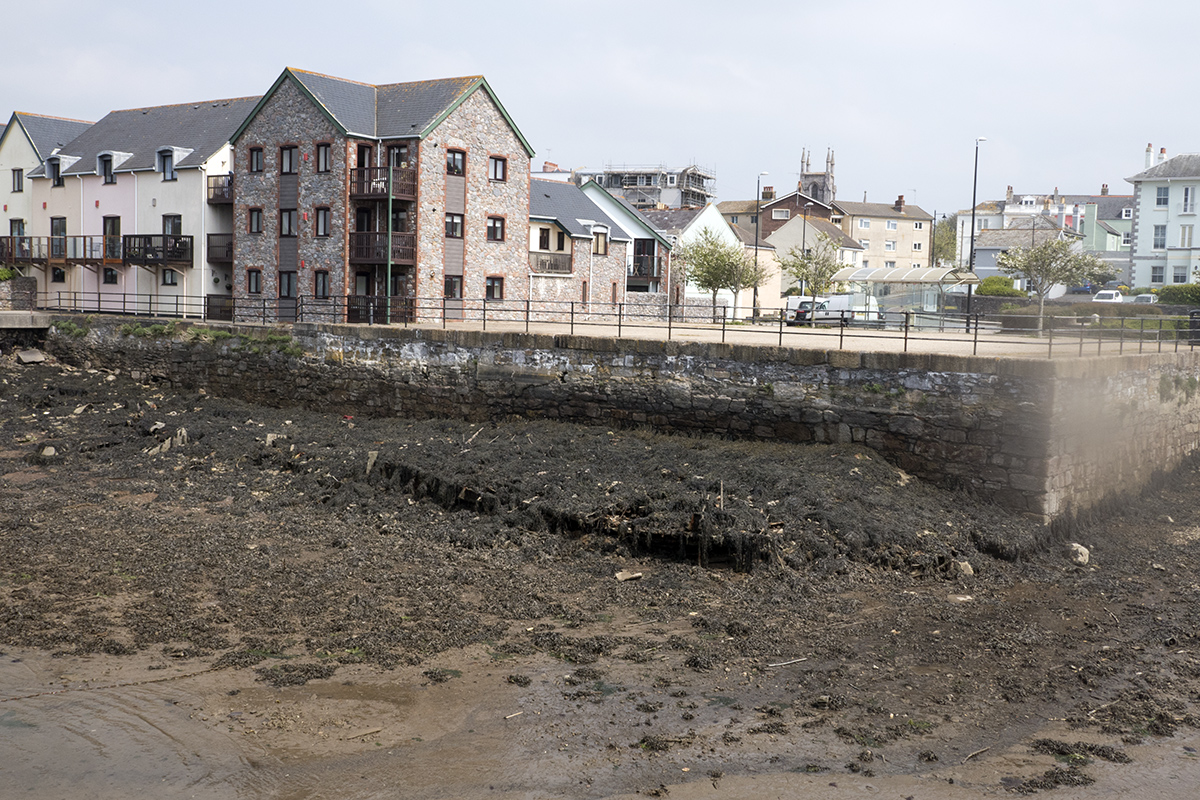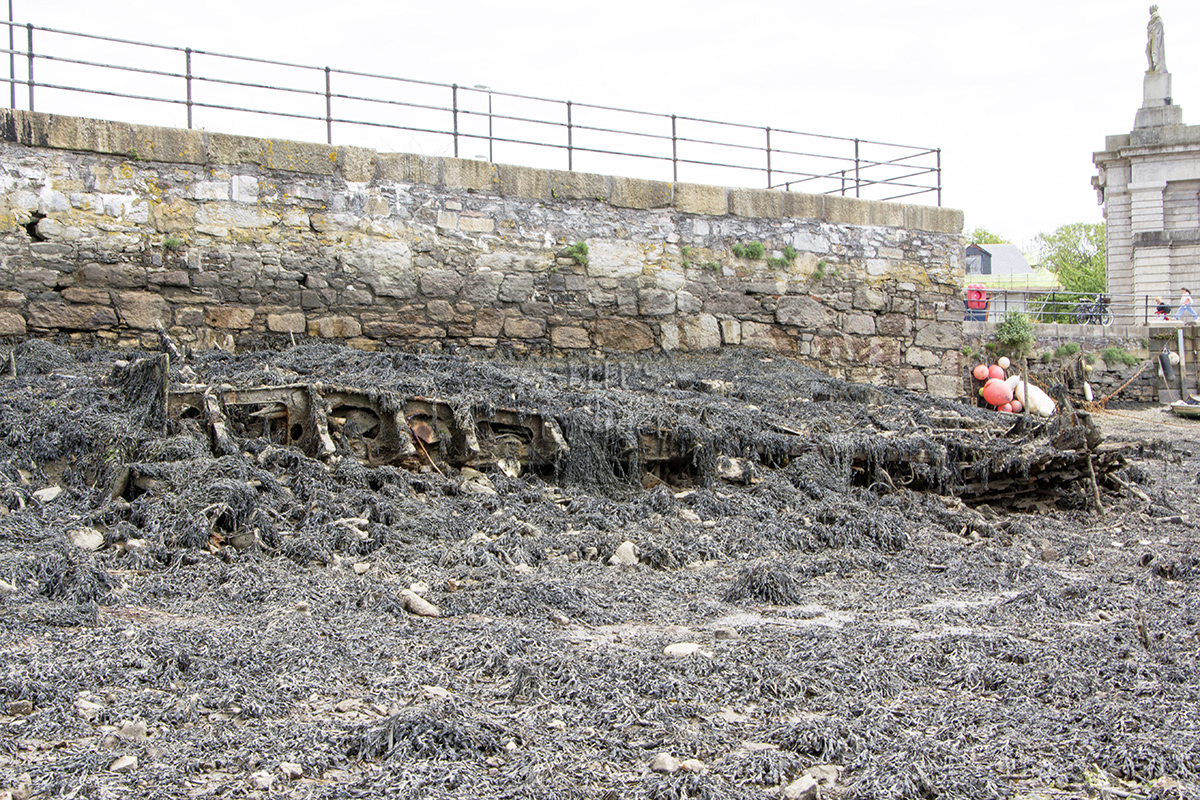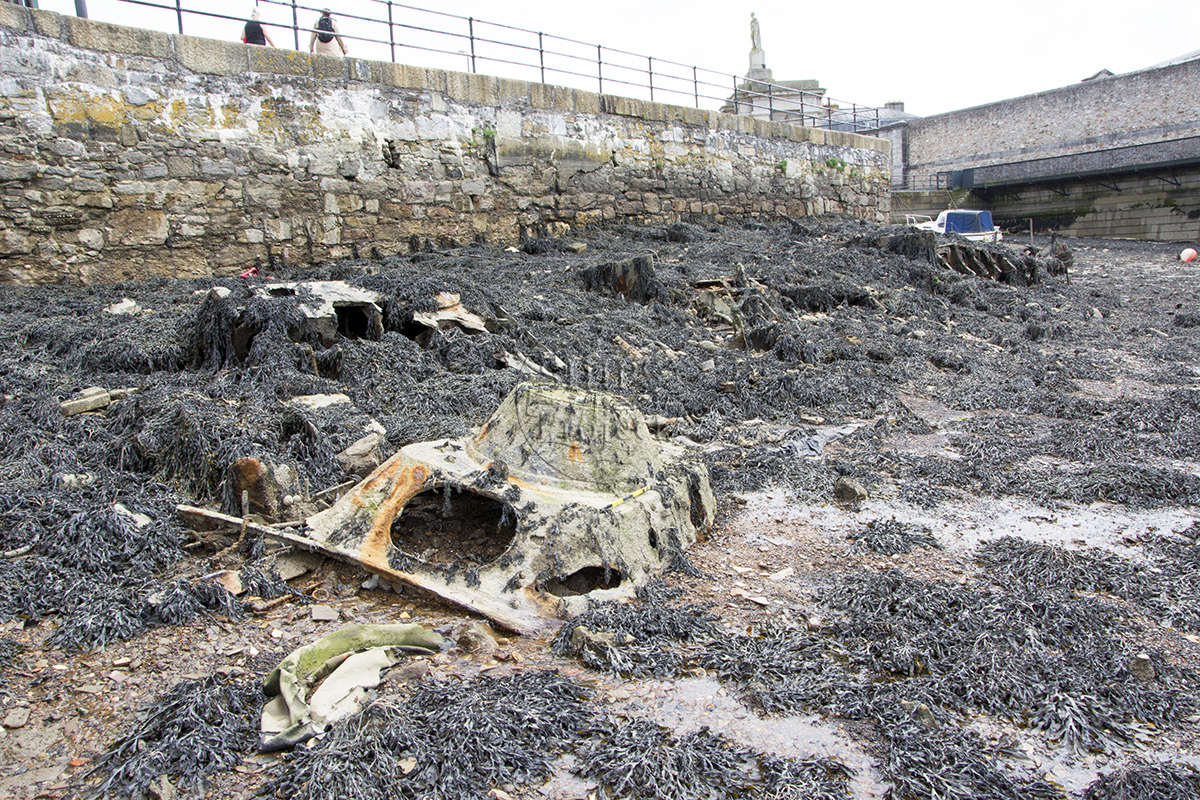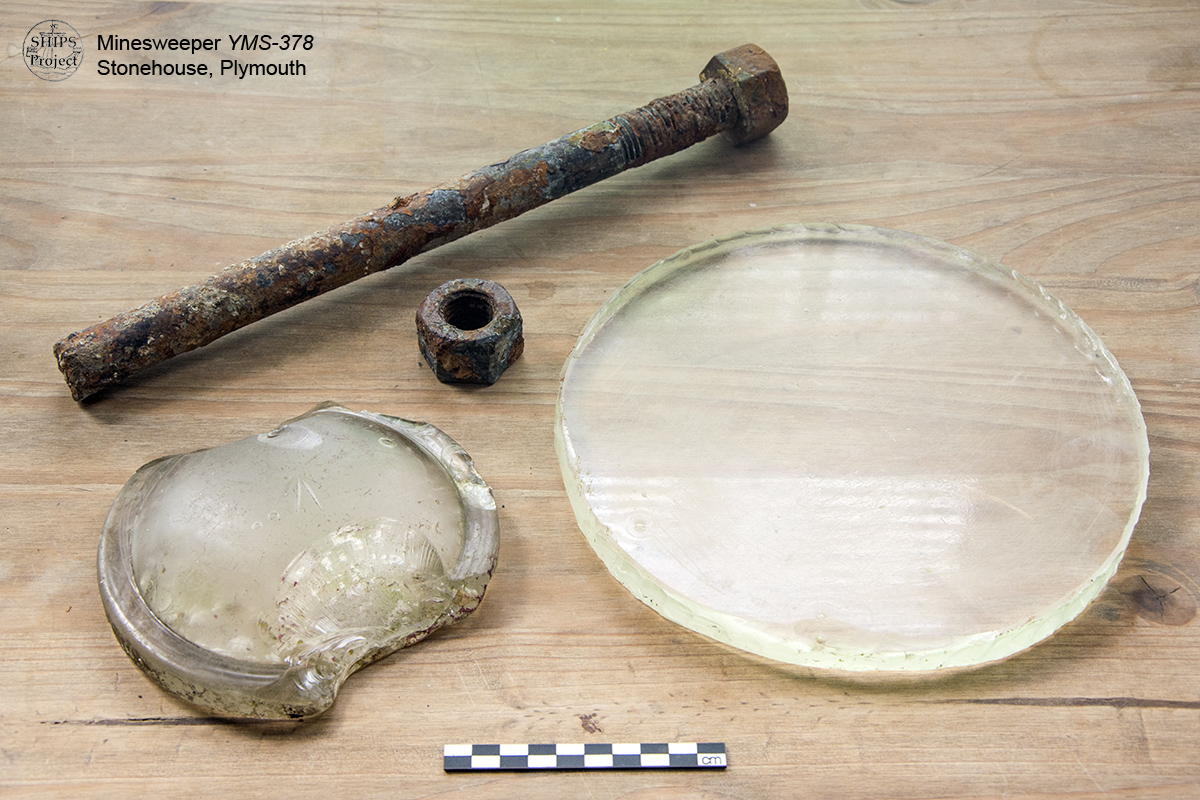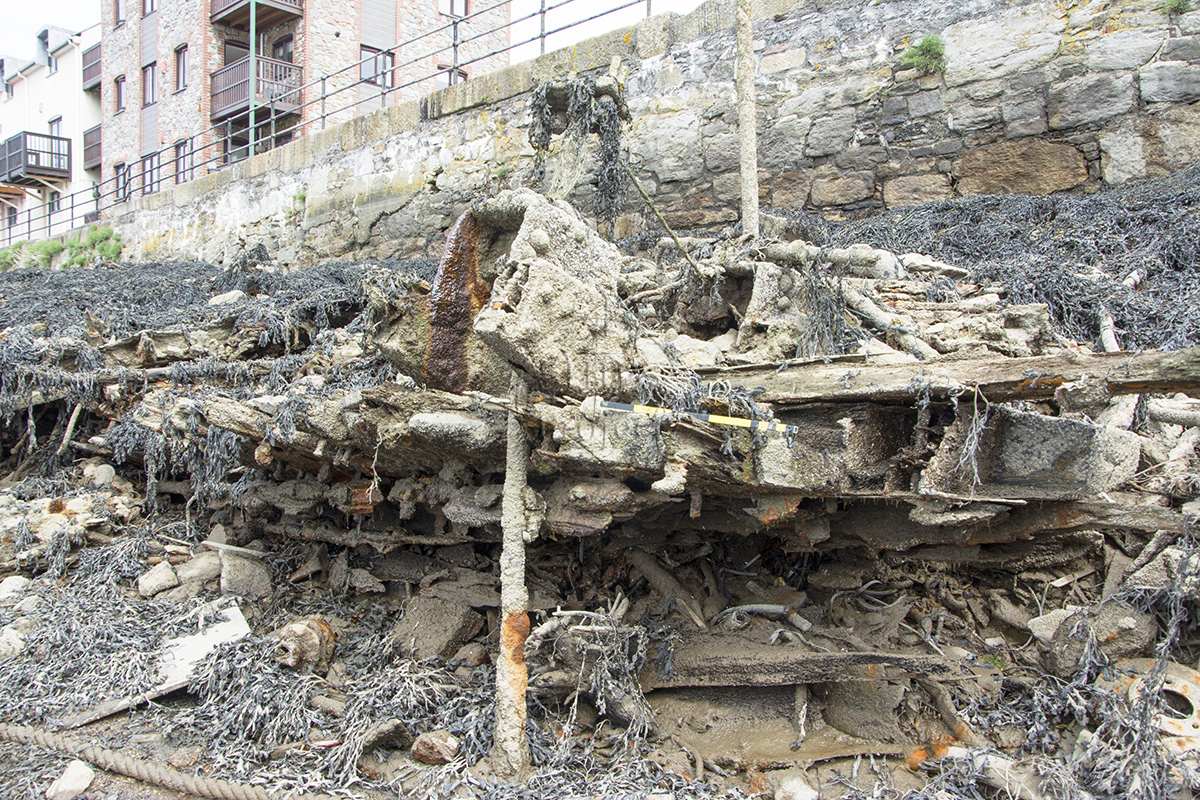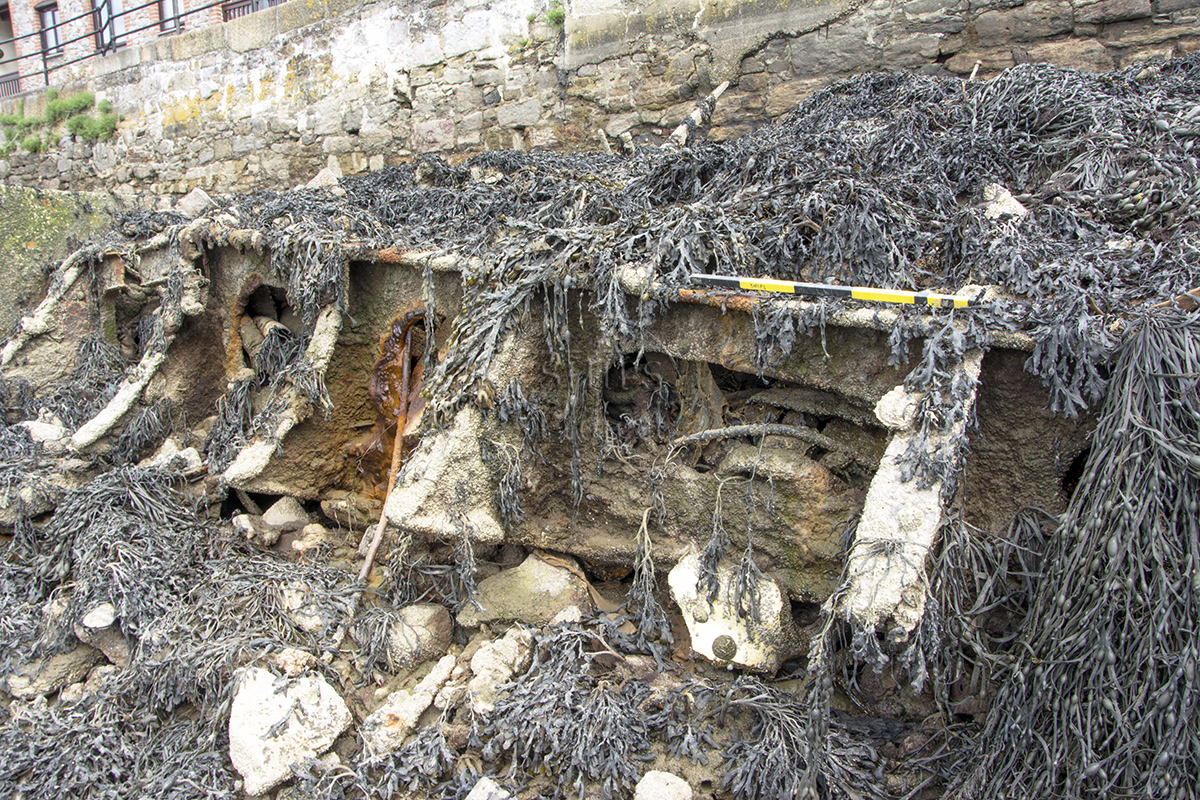Not Set
American minesweeper broken up on the beach at Stonehouse, Plymouth.
Type
Auxiliary Motor Minesweeper / Yard Minesweeper (YMS)
History
The minesweeper YMS-378 was launched on 27 April 1943 at the Greenport Basin and Construction Company., Greenport, New York. The ship was sponsored by the French-American operatic soprano and actress Lily Pons, launching the ship in the traditional way by breaking a bottle of champagne over her bows. The actress then sang 'The Star Spangled Banner' and was joined in the chorus by 2000 workers and guests of the shipyard. The ship was commissioned at the Brooklyn Navy Yard in September with Lieutenant Joseph J. Guidrey, USNR, as her first commander.
The minesweeper was 136 ft long, built of wood held together with copper bolts, armed with a 3 in gun on the fo’c’sle and two 20mm anti-aircraft guns on the bridge and two depth charge projectors. The complement consisted of four officers and 29 men and a total of 481 of this type of ship were completed, mainly for inshore minesweeping duties.
The story of YMS-378 at D-Day was told by Captain Joseph J. Guidrey, USNR, her commanding officer. At the time Guidrey was a Navy Lieutenant and had been in Plymouth since May 1944 and his was one ship that formed Squadron Y of the Assault Force “U”. Her mission was to sweep and buoy the channel for the amphibious landing craft starting at 6 hours before 'H hour', 06:30, to sweep and buoy the fire support channel for the bombarding ships from the west end of Omaha Beach to the west end of Utah Beach and to sweep areas around the Troops Transports. After a false start the minesweeper found herself off the Normandy beaches just after midnight on 6th June, starting to undertake her mission with the rest of the fleet, with 9 minesweepers in line abreast and two ships dropping marker buoys.
Dawn on D-Day was at 05:00, the Germans on shore spotted the squadron and opened fire so the minesweepers moved offshore and swept the transport areas, working until 21:00. The following days were spent sweeping offshore at Omaha and Utah beaches for 15 hours each day, hunting for moored mines, magnetic and acoustic mines, eliminating 150 mines over the next six days.
On 12th June the squadron were working just one mile off the Cotentin Peninsula when the shore batteries again opened up. The YMS-378 took most of the fire and suffered enough damage that she was sent back to Plymouth for repairs, luckily there were no casualties.
The YMS-378 soon resumed work and by 30th July she was working in tandem with YMS-304 near St. Vaast off Utah Beach clearing a new channel for merchant ships of acoustic and magnetic mines. About 09:00 a mine exploded under YMS-304 and two others exploded near YMS-378, YMS-304 started sinking immediately and was lost within 5 minutes. YMS-378 lost all electrical power and lost one main engine and was taking on water, despite the damage she rescued many of the crew of her sister ship. Other vessels came to the rescue, putting pumps on board the stricken YMS-378 and keeping her afloat long enough to be beached. Repair crews came on board and found that the sea chests had been blown out by the explosions, they patched her up and she was refloated on the next tide. YMS-378 was taken in tow by two other minesweepers from the squadron and they all headed back to Plymouth, arriving on 3rd August with the damaged vessel still afloat..
The YMS-378 was declared a total loss by surveyors so she was stripped of all equipment on the main deck and above so her gear could be used to repair other ships, then she was decommissioned in September 1944. Confusingly, the YMS-378 was reported lost as the result of enemy action along wih YMS-304 and YMS-350 in the Navy Department Communique of 26th October 1944 which may explain why many online resources have her listed as being sunk off Normandy.
Lieutenant Guidrey was awarded the Bronze Star medal with Combat “V” for his dangerous work during the Normandy invasion. The information about YMS-378 has been taken from Captain Guidrey's account, as told to his daughter 50 years later ![]()
The hull of this minesweeper was sold in August 1947, she was put alongside the Davies and Cann scrapyard at Freeman’s Wharf in Stonehouse, all the remaining useful metal was removed and the remains were left to disintegrate. The flattened stern and parts of her bow can still be seen on the beach at Stonehouse, covered in seaweed.
The remains of this hulk were identified by John Cotton when he first found the ship from the numbers painted on the hull. Read about this hulk on John Cotton's Historic Shipping website ![]() .
.
Download a copy of the full story of this D-Day veteran here: 'The First Ones In - the Story of YMS-378' ![]() .
.
Description
The remains of this hulk are covered in weed and a thick layer of hard concretion where rusty steelwork has fused together, but some of the structure can be identified. The few remains of her bow lies towards the north and her stern is to the south, the ship was so long that it filled the whole wharf, see the aerial photo 4 from Cyberheritage. Hull timbers can be seen at her port quarter and the large steel engine beds are still visible further forward.
Objects found from this ship include a 240mm / 9.5in glass porthole etched with the word 'Armourplate', a 25.4mm / 1in diameter threaded bolt used to fasten the ship's timbers together and a 150mm / 6in diameter glass deck light marked with the Royal Navy broad arrow. The British-made deck light may have been fitted to the ship when she was repaired in Plymouth in June 1944 after sustaining damage from German shore batteries.
Reported as having sunk off Normandy by a number of online resources however her remains lie off Stonehouse.
Location and Access
Freeman’s Wharf, Stonehouse, Plymouth.
The remains of YMS-378 can be seen at low tide, hard up against the wall at Freeman's wharf, see photograph 5. The beach can be accessed via the steps alongside the Royal William Victualling Yard, the mud is deep in places so wearing wetsuit boots is advised.
Care must be taken when investigating this hulk as the foreshore is littered with her remains and other rubbish including broken bottles and sharp metal. The hulk itself is an unstable pile of timber and steel so excavation is dangerous, and please note that the valuable non-ferrous material was removed by the scrapyard before the ship was abandoned.
Nearby hulks include Stonehouse 1 ![]() on the same beach.
on the same beach.
Last updated 03 Jan 2021
Information
Date Built:
April 1943
Builder:
Greenport Basin & Construction Co. at Long Island, New York, U.S.A.
Official Number:
Call sign: N.D.J.N.
Length
41m / 136ft
Width
7.5m / 24.6ft
Draught
2.4m / 8ft
Construction
Timber, copper bolts
Propulsion
Two 440 bhp General Motors 8-268A diesel engines, two propellers, 15 knots max.
Tonnage
270 tons displacement
Portmarks
None
Outcome
Broken up in 1947
Reference
Unknown
Lily Pons Launches the YMS-378
Jacques Cousteau's Calypso
Another famous Yard Minesweeper is the Calypso, exploration vessel owned by pioneer diver Jacques-Yves Cousteau. The Calypso was originally BYMS-26 and was commissioned into the Royal Navy as HMS J-826, then becoming BYMS-2026 in 1944. Laid up after the war, she became a ferry in Malta in 1949 before being converted to a research vessel.
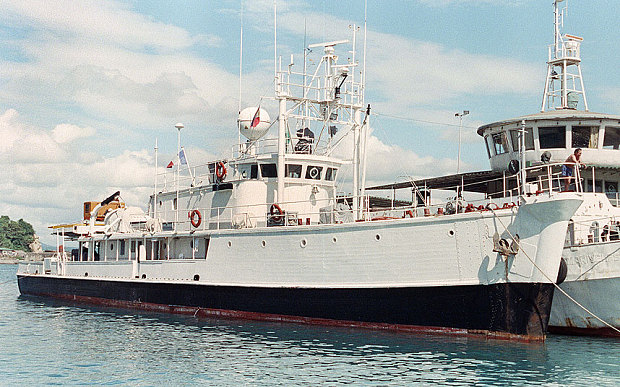
Not Set
Leave a message
Your email address will not be published.
Click the images for a larger version
Image use policy
Our images can be used under a CC attribution non-commercial licence (unless stated otherwise).


